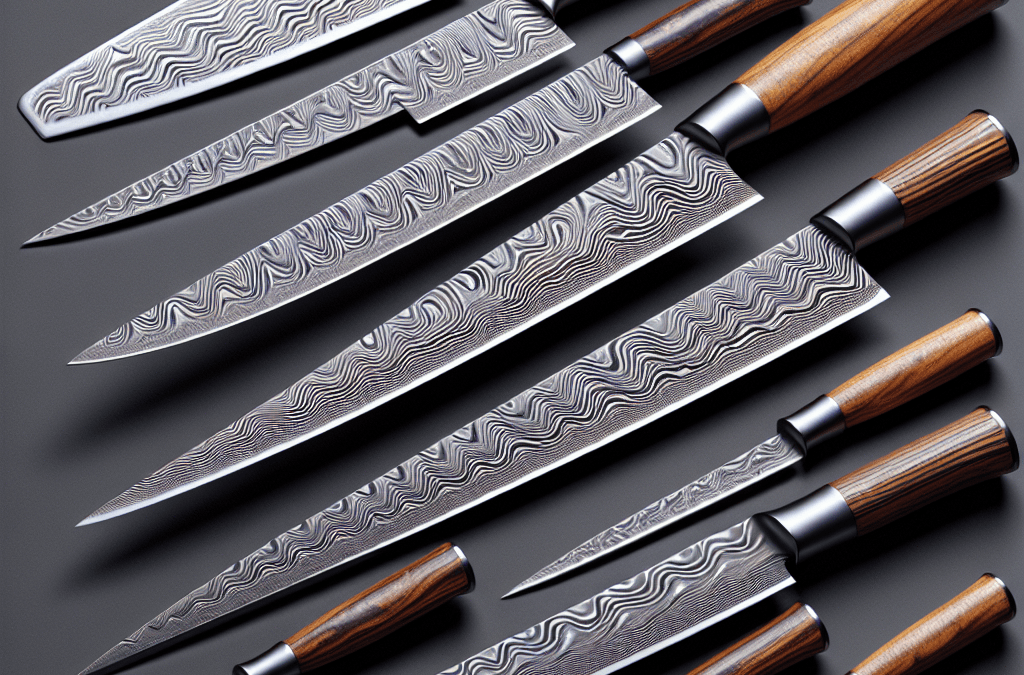Japanese Damascus steel knives are renowned for their exceptional quality and craftsmanship. These knives have a long and fascinating history, rooted in ancient Japanese sword-making traditions. In this article, we will explore the origins and evolution of Japanese Damascus steel knives.
The Origins of Damascus Steel
The art of forging Damascus steel can be traced back to ancient times, with its origins believed to be in the Middle East. However, it was the Japanese who perfected the technique and elevated it to an art form.
Japanese swordsmiths, known as “katanakaji,” developed their own unique method of producing Damascus steel during the Heian period (794-1185). They combined different types of iron and steel to create a blade with superior strength, sharpness, and durability.
The Making of Japanese Damascus Steel Knives
The process of making Japanese Damascus steel knives is a meticulous and labor-intensive craft. It involves several steps, each carried out with precision and skill.
1. Selecting the Materials: The first step is to carefully select the materials for the blade. Japanese swordsmiths use a combination of high-carbon steel and low-carbon iron, which are layered together to create the distinctive pattern of Damascus steel.
2. Forge Welding: The selected materials are heated and hammered together repeatedly to remove impurities and create a solid billet. This process, known as forge welding, ensures that the different layers of steel are bonded tightly.
3. Folding and Forging: The billet is then folded multiple times to increase the number of layers and refine the steel’s structure. This folding and forging process helps to distribute carbon evenly throughout the blade, enhancing its strength and sharpness.
4. Quenching and Tempering: After the blade is shaped, it is heated and quenched in water or oil to harden the steel. The blade is then tempered to reduce its brittleness and improve its resilience.
5. Polishing and Finishing: The final step involves polishing the blade to reveal the intricate pattern of the Damascus steel. This is done using traditional Japanese polishing stones, which require great skill and patience.
The Unique Characteristics of Japanese Damascus Steel Knives
Japanese Damascus steel knives are prized for their exceptional qualities. Here are some of the unique characteristics that set them apart:
1. Exceptional Sharpness: The multiple layers of steel in a Damascus blade create a fine, razor-sharp edge that can effortlessly slice through food with precision.
2. Durability: The folding and forging process enhances the strength and durability of the blade, making it resistant to chipping and breaking.
3. Beautiful Patterns: The distinctive patterns seen on the surface of a Japanese Damascus steel knife are the result of the layering and folding process. These patterns, known as “Hada” in Japanese, are highly prized and add to the knife’s aesthetic appeal.
4. Excellent Edge Retention: Damascus steel knives have excellent edge retention, meaning they can maintain their sharpness for a longer time compared to other types of knives.
The Legacy of Japanese Damascus Steel Knives
The art of Japanese Damascus steel knife-making has been passed down through generations of skilled craftsmen. Today, these knives are highly sought after by professional chefs and knife enthusiasts around the world.
Japanese Damascus steel knives continue to be a symbol of exquisite craftsmanship, blending tradition with modern technology. Whether used in the kitchen or admired as a work of art, these knives embody the rich history and skill of Japanese sword-making.
In conclusion, the history of Japanese Damascus steel knives is a testament to the ingenuity and craftsmanship of Japanese swordsmiths. From their humble origins to their status as highly prized culinary tools, these knives have stood the test of time and continue to be revered for their exceptional quality.

Recent Comments